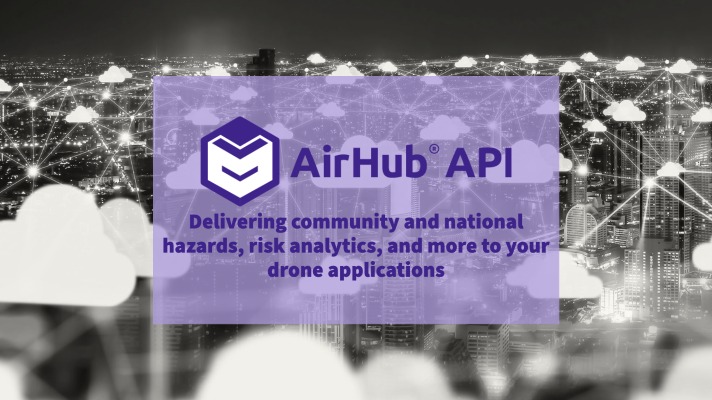Powering Innovation with AirHub® APIs

As Unmanned Aircraft Systems (UAS) capabilities progress, the number of remote pilots and businesses integrating these operations is rapidly rising, pressing the need for immediate and precise information to inform safe drone operations.
Safely integrating drones into the national airspace and local communities is the fundamental tenet of Airspace Link’s AirHub® application. AirHub® is a geospatial-based digital mapping system used to determine air and ground characteristics, hazards, and risks. It also recommends the safest and most efficient areas and paths for drone operators to conduct their missions.
Airspace Link starts at the community level to help drone operators understand where there are areas of high population density, critical or sensitive infrastructure such as power lines, hospitals, schools, playgrounds, local advisories, and other important community assets. Paired with airspace data from the FAA, Airspace Link integrates those GIS datasets directly from the local authorities and transforms them into meaningful risk insights.
AirHub® now exposes these unique capabilities to developers in the UAS industry so that more drone applications and solution providers can incorporate essential airspace and ground risk datasets to ensure added levels of safety for their users and the communities they operate in.
Airspace Link has recently considerably expanded access to the AirHub® application via this new API capability. AirHub® works as a conduit between businesses not currently integrated with the FAA to offer access to the Low Altitude Authorization and Notification Capability (LAANC) through linking for when operators are flying in controlled airspace. These and other AirHub® features assist in helping drone operators understand the rules and constraints of the airspace and provide more context about what ground-based hazards they are flying near and over.
APIs are no longer a stop-gap to the future for fast-moving developers building on a global scale—they’re a critical part of winning strategies. AirHub® APIs enable partners to focus on their core products and services without having to build specialized functions or particular insights. The result yields faster and safer access to the national airspace while streamlining operator workflows that might otherwise be less methodical on their own.
-----------------------------------------------------------------------------
Case Study
Quick to adopt the API was location intelligence global leader Esri, who partnered with Airspace Link to release a new integration in its Site Scan for ArcGIS flight planner application.
This integration enables Esri to meet the objectives of their own drone-based software while taking advantage of Airspace Link’s airspace information, third-party data sets, and FAA-approved low altitude authorization capabilities (LAANC) through linking. The end result makes operations created in Site Scan substantially faster, significantly more informed, and most importantly safer.
-----------------------------------------------------------------------------
Integrating the API with existing software and accessing the data within AirHub® is simple. Today, via the API, a third party can create an operation, open the AirHub® interface to maximize the path to FAA flight approval, and fly in a matter of minutes – a process that previously took months. Users can also access the same AirHub® suite of tools and data to create their own analysis and further their proprietary applications.
From agriculture to automotive, medical to energy, drone usage is powering new solutions and efficiencies within nearly every industry. Airspace Link’s mission is to fuel and grow these usage capabilities by building the foundation for drones to operate in compliance with FAA requirements and community considerations while achieving the highest level of safety and efficiencies for their intended missions.
With this new API integration capability, we look forward to extending the facilitation of data exchange to empower the future of the entire UAS industry.
For more information and directions for accessing the API, please visit https://airhub.airspacelink.com/docs/#introduction